What Is Chicken Vindaloo? The Spicy Story Behind This Goan Classic
If you've ever tasted Chicken Vindaloo and thought, "Wow, my mouth just went to Goa and back," then congratulations—you've experienced the magic of this iconic dish. But what exactly is Chicken Vindaloo? Where did it come from? And why does it make your nose run faster than a monsoon downpour?
In this blog post, we'll take a deep dive into the history, ingredients, and spice levels of this beloved dish—and yes, there's a chart comparing its heat level to other global favorites like Mexican chili con carne and Thai green curry.
Table of Contents
- A Brief History of Vindaloo: From Portugal to India with Love
- The Holy Spice Trinity (and More!)
- Just How Spicy Is Chicken Vindaloo?
- Cooking Tips for the Perfect Vindaloo at Home
- How Vindaloo Compares to Other Global Spice Stars
- Final Thoughts: Vindaloo or Die Trying
A Brief History of Vindaloo: From Portugal to India with Love
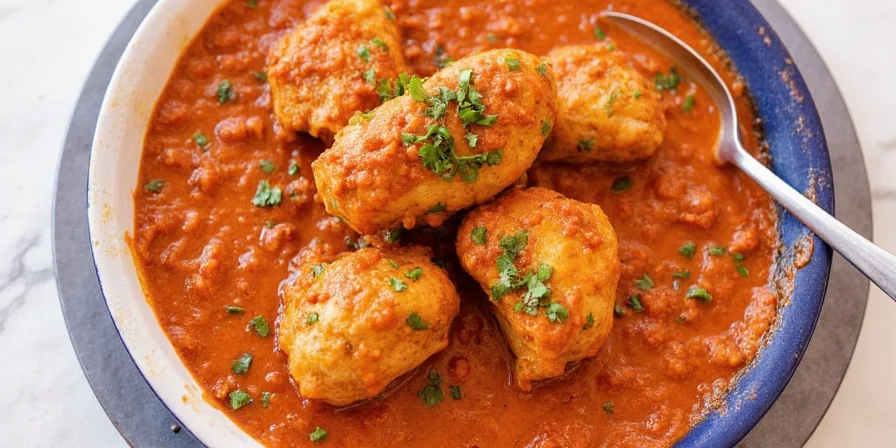
The name “vindaloo” may sound Indian, but its roots are surprisingly Portuguese. Yes, you read that right—Portuguese! In the 15th century, Portuguese sailors brought their dish called carne de vinha d'alhos, which translates roughly to “meat in wine and garlic.” It was originally a way to preserve pork using vinegar and spices during long sea voyages.
Fast forward to Goa, India—the only place in India where Catholicism took root. Local cooks adopted the recipe, swapped out pork for chicken or mutton, and added Indian spices like cumin, cinnamon, and cloves. Vinegar remained, but now it came from tamarind or kokum instead of Portuguese wine.
Today’s Chicken Vindaloo is a beautiful cultural mashup: part European preservation technique, part South Asian spice explosion. And the best part? It’s delicious enough to make you forget everything else on your plate—even if your tongue feels like it’s been lit on fire.
The Holy Spice Trinity (and More!)
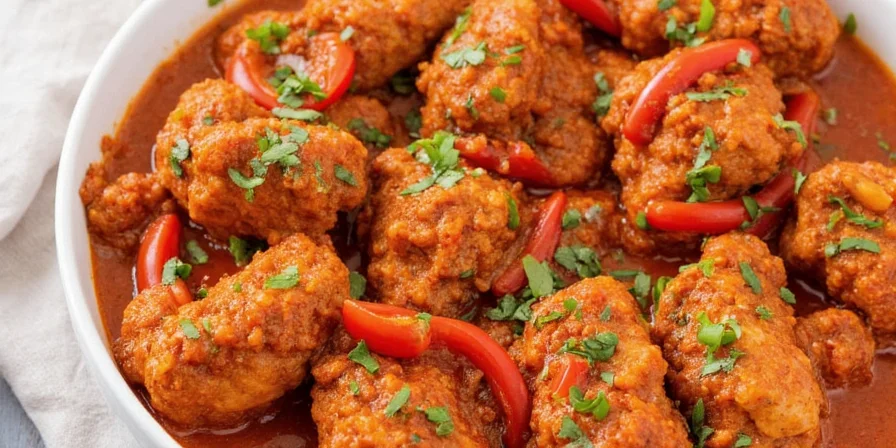
Chicken Vindaloo wouldn’t be the same without its legendary spice mix. Here’s a breakdown of the key ingredients that give this dish its signature punch:
- Vinegar: Traditionally used for preservation, it also adds a tangy kick that balances the richness of the meat.
- Garlic: Lots and lots of garlic. Seriously, if you don't want to kiss anyone after eating this, you're doing it right.
- Chili Peppers: Usually Kashmiri red chilies for color and heat. But if you want extra fire, add some bird’s eye chilies!
- Cumin Seeds: Adds earthiness and depth to the marinade.
- Black Pepper: Not just for heat—it gives the dish a woody, complex backbone.
- Cinnamon & Cloves: These warm spices create a sweet-savory contrast that dances on your palate.
Pro tip: Marinate your chicken for at least 8 hours (overnight is better!) to let all those flavors penetrate the meat. Trust us, patience pays off in spades—literally and figuratively.
Just How Spicy Is Chicken Vindaloo?

Wondering how hot Chicken Vindaloo really is? Let’s break it down using the Scoville Scale, which measures the heat level of peppers based on capsaicin content.
| Dish | Average Scoville Units (SHU) | Description |
|---|---|---|
| Chicken Vindaloo | 50,000–100,000 | Spicy with lingering heat; depends on chilies used |
| Thai Green Curry | 50,000–100,000 | Fragrant yet fiery, with fresh herbs and coconut milk |
| Mexican Habanero Salsa | 100,000–350,000 | Burns fast and hard—only for spice warriors |
| Indian Butter Chicken | 5,000–10,000 | Mild to medium, creamy, and comforting |
| Japanese Wasabi | Not applicable | Not a chili pepper—but packs a sinus-clearing punch |
So, Chicken Vindaloo definitely brings the heat—but it’s more of a slow-burn fire rather than an instant explosion. That said, if you’re not used to high spice levels, consider adjusting the chili quantity or serve with cooling yogurt or raita.
Cooking Tips for the Perfect Vindaloo at Home
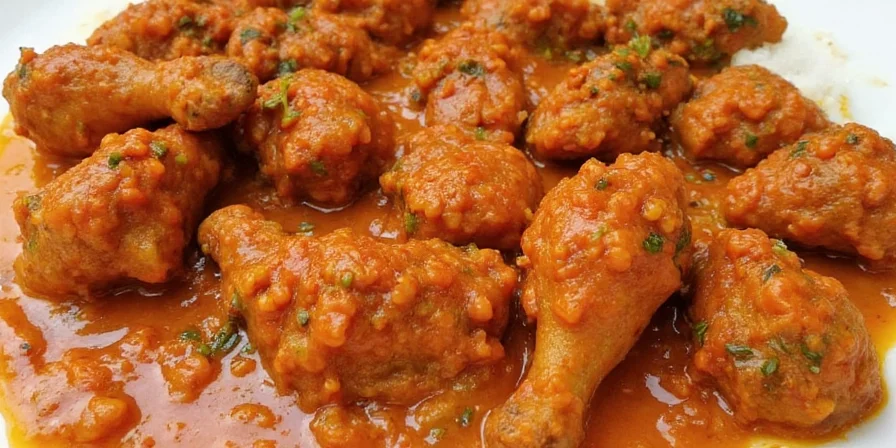
If you're ready to bring the fire to your kitchen, here are some pro tips to ensure your Chicken Vindaloo turns out authentic and absolutely mouthwatering:
- Use Bone-in Chicken: Not only does it add more flavor, but the bone helps keep the meat juicy even under high heat.
- Marinate Overnight: Don’t rush the marination. Give the chicken at least 8–12 hours to soak up all the garlicky, spicy goodness.
- Add Tamarind Paste: For a fruity tang that complements the vinegar beautifully.
- Simmer Slowly: Cook the chicken low and slow so it absorbs the sauce without drying out.
- Serve with Rice or Bread: Steamed basmati rice or soft naan is essential to balance the spice and soak up the juices.
- Add Coconut Milk (Optional): If you prefer a creamier version, stir in a splash of coconut milk at the end. Think of it as a “tropical twist” Vindaloo!
How Vindaloo Compares to Other Global Spice Stars
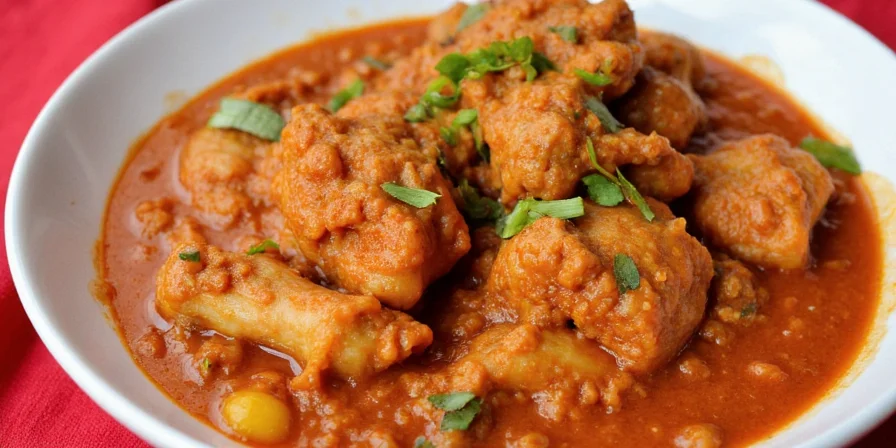
Spice is universal, but every culture has its own way of bringing the heat. Here’s how Chicken Vindaloo stacks up against some famous international dishes:
- Tacos al Pastor (Mexico): Uses dried chilies and pineapple for a smoky-sweet combo. Less intense than Vindaloo, but still flavorful.
- Korean Kimchi Jjigae: Fermented kimchi brings both spice and funk. Great for probiotics and a tingling mouthfeel.
- Thai Tom Yum Soup: Fiery, fragrant, and packed with lemongrass and galangal. Like Vindaloo, it uses chili but also citrus notes.
- Italian Diavolo Pasta: Italian-style heat, usually from crushed red pepper flakes. Mild compared to Vindaloo, but satisfying.
- Jamaican Jerk Chicken: Uses Scotch bonnet peppers and a dry rub. Bold and aromatic, but with a different kind of fire.
So while Vindaloo isn’t the hottest dish on the planet, it definitely holds its own in the global spice arena. What makes it unique is the perfect blend of sour (vinegar), savory (meat), and spicy (chilies)—a full-bodied flavor profile that keeps you coming back for more.
Final Thoughts: Vindaloo or Die Trying
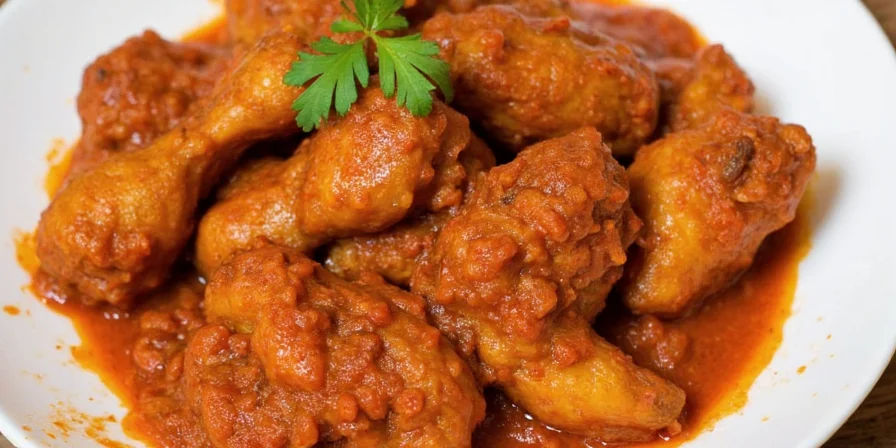
Chicken Vindaloo is more than just a spicy curry—it’s a story of cultural fusion, historical trade routes, and culinary evolution. Whether you’re making it at home or ordering it at a restaurant, one thing’s for sure: it’s a dish that commands attention.
So go ahead—take a bite, feel the burn, and remember: you didn’t just eat Chicken Vindaloo…you survived it.
Summary of Key Points
- Chicken Vindaloo originated from a Portuguese dish and evolved in Goa, India.
- Key ingredients include vinegar, garlic, red chilies, and warm Indian spices.
- Its spice level ranges between 50,000–100,000 SHU, depending on the chilies used.
- It compares favorably to other global spicy dishes like Thai curries and Mexican tacos.
- Marinating overnight and simmering slowly are crucial steps for flavor and texture.

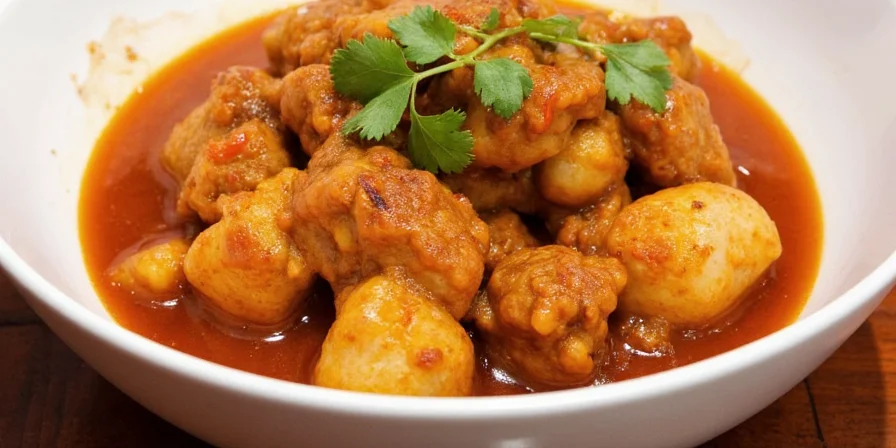









 浙公网安备
33010002000092号
浙公网安备
33010002000092号 浙B2-20120091-4
浙B2-20120091-4